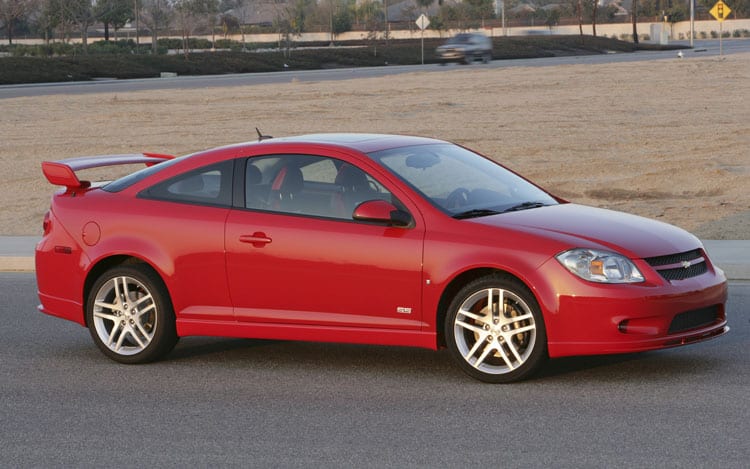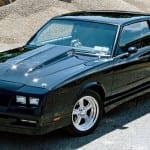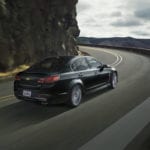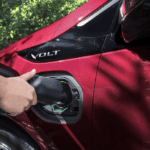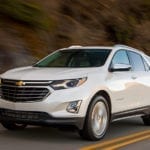To innovators, designers and engineers, employment in the automotive industry must prove a finicky mistress of sorts. On some occasions, a particular model will prove enduring in its success, transcending generations in its evolving appeal. On other occasions, however, a particular model might only exist as a proverbial flash-in-the-pan, fading from a lineup as quickly as it first appears. In terms of the latter, consider the Chevrolet Cobalt SS.
As both a global leader and one of the ‘Big Three’ domestic automakers, Chevy seeks no vindication and needs never defend their staying power. From the iconic Camaro to the stalwart Silverado, they have been successful in serving up tentpole offerings that serve to anchor the lineup while they experiment with other models. Largely forgettable, the Cobalt certainly falls into the second category, having only been produced between 2005-2010.
But does the limited nature of the Cobalt’s existence equate to a lack of success on Chevy’s part, in terms of creating a compelling offering? As we’ve seen in recent months, big picture decisions can be made to create room for more timely models. Is it possible that the Cobalt was simply a victim of timing? Could it have enjoyed a longer and more celebrated life had it been more reflective of changing consumer sensibilities? We could play ‘What-if’ all day long. But, in an attempt to give credit where it’s due, let’s place this iteration Cobalt in a vacuum, and take a long, hard look at it, to see where it succeeds (and where it falls short).
Chevy Cobalt
First things first, the matter of housekeeping. The Cobalt SS was Chevy’s stab at serving up a hi-powered version of the Cobalt, a compact offering served up in both sedan and coupe styling. Built upon GM’s Delta platform, the Cobalt was largely uninspired and indicative of a somewhat tired design trope that had been marched out repeatedly since the early 1990’s.
That said, we’re not here to bash the Cobalt from a 2019 perspective, but hindsight is 20/20. Simply put, the Cobalt was ‘nothing to write home about’ from a design perspective. Average in weight, when compared with class competitors, the only significant differentiator was a slightly longer wheelbase. But as a whole, the Cobalt never truly felt ‘new’ or ‘exciting’.
Another failing of the Cobalt came in terms of safety. When evaluated by the Insurance Institute for Highway Safety (IIHS) it would barely measure up, earning such lacking scores as ‘Poor’, ‘Good’ and ‘Acceptable’. So it’s no real surprise that, across its first four model years, the Cobalt would earn the highest fatality rate in its class. Adding fuel to the fire, the first two model years would later be subject to a 98,000 vehicle safety recall (which certainly did little to help the Cobalt’s case).
So, for anyone keeping score, what we had was an underwhelming design that offered little assurance of safety. Considering that the Cobalt existed at a time when crossovers would begin to steal consumer attention thanks to fresh designs and safety features, it would seem the model had its work cut out for it since day one. But what about performance and fuel economy?
Under the hood, the Cobalt was introduced with a 2.2-liter EcoTec inline four-cylinder capable of 145 hp and 155 lb-ft of torque, while delivering a competitive fuel economy of 34 mpg highway / 24 mpg city. There would be other powertrain configurations served up across its limited six-year run, but the decision to create an SS variant would prove one of the most inspired attempts to redeem the Cobalt.
The SS Treatment
Since 1961, the Super Sport moniker was used by Chevy to denote their signature performance package. Debuting with the 1961 Impala, a number of Chevy models received the SS treatment earning enhanced sport-inspired exterior and interior features, alongside upgraded powertrain, suspension and tires. Some of the most iconic SS offerings include the Camaro, Chevelle, Monte Carlo and Nova. And of course, Super Sport variants are easily recognized by the bold ‘SS’ badging which is emblazoned across their respective grilles, replacing the traditional Chevy ‘bowtie’.
But if Chevy lent such badging to its most inspired performance offering, is giving a relatively uninspired offering like the Cobalt the SS Treatment the automotive equivalent of putting lipstick on a pig? Let’s take a closer look.
Chevy Cobalt SS
It’s not uncommon for hi-po’d variants to be introduced after the fact, creating a sense of upgradeability thanks to their aspirational nature. But it’s worth noting that the Cobalt received the SS treatment immediately, with both base trim and Super Sport versions introduced in tandem. In total, the introduction consisted of five different powertrain options, three of which comprised the SS offerings.
Having yet to paint the Cobalt in the most positive light, it is worth pointing out that the Cobalt SS had managed to garner some enthusiastic praise. In fact, such noteworthy comments referred to it as both ‘the best compact car ever made by General Motors’ and ‘a future classic’. This, of course, goes to support the powertrain options, since criticism of the Cobalt’s uninspired aesthetic was instantaneous, and never really waned. So, let’s lift the hood…
Across its lifetime, the Cobalt SS was served up with three different engine configurations. The first, a 2.0-liter inline four-cylinder drove the Cobalt’s power ratings up to 205 hp and 200 lb-ft of torque. Equipped with an Eaton M62 Roots supercharger and air-to-liquid intercooler, the more powerful Cobalt was eligible for a number of stage kit upgrades. Unfortunately, progressive emissions requirements would render this powertrain obsolete, and the dissolution of GM’s contract with Eaton would allow for adjustment in the 2008 model year.
Pairing a 2.0-liter turbocharged direct-injection EcoTec four-cylinder with an F35 5-speed manual transmission, the 2008 Cobalt SS boasted further jacked up performance numbers. Now delivering 260 hp and a matching 260 lb-ft of torque, it had some legitimate performance credibility. And with competitive track-inspired drive settings it was capable of sprinting to 60mph in as little as 5.5 seconds. This configuration was further expanded in 2009, with the introduction of a new Stage 1 kit that enabled an output of 290 hp and 340 lb-ft of torque.
And while it may mean little in terms of performance, the third and final powertrain option was the naturally aspirated 2.4-liter I4, mated to either a 5-speed manual or 4-speed automatic. With a more modest 171 hp and 163 lb-ft of torque, it did little to quench the thirst of performance enthusiasts but helped to bridge the gap to its super and turbocharged stablemates.
What Do We Love About the Cobalt SS?
It’s a tough question to answer, if we’re being completely honest. In all fairness, we’ve done little to paint it in a positive light, with the exception of the more aggressive performance configurations. But our assessments are grounded in honesty and, simply put, the Cobalt was never really that compelling.
It’s no surprise, that the Cobalt would enjoy such a brief lifespan. In fact, GM’s plans to terminate it first began to take root as early as 2007, indicating that it had fallen out of favor very early on. Perhaps, if they had done more to create a stronger aesthetic, we’d have more positive things to say. Unfortunately, that’s just not the case.
